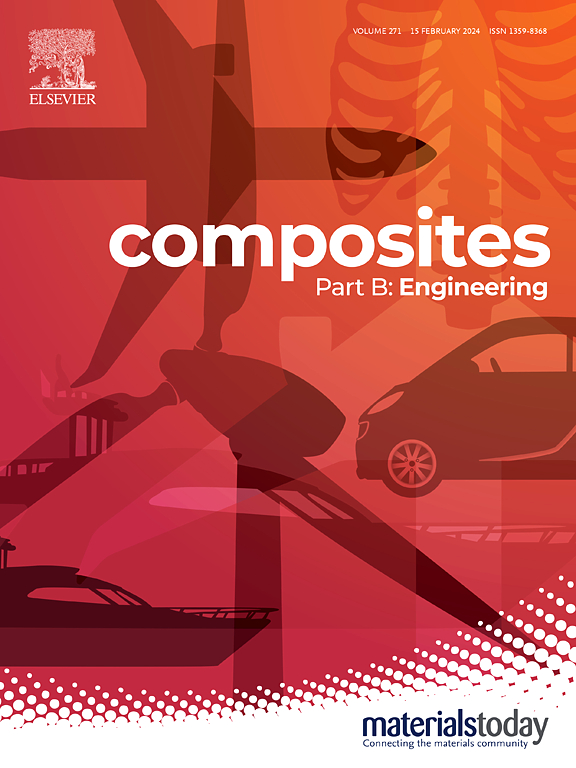Enhancing wood-plastic composites for high-performance structural applications
IF 12.7
1区 材料科学
Q1 ENGINEERING, MULTIDISCIPLINARY
引用次数: 0
Abstract
To address the limitations of traditional wood-plastic composites (WPC), including low strength, susceptibility to creep, brittle fracture, and poor dimensional stability, and to fill the gap in building load-bearing structures, we have developed a novel structural WPC (S-WPC) with high strength, high ductility, high creep resistance, and high dimensional stability. S-WPC was fabricated utilizing self-developed co-extrusion molding equipment and incorporating high-strength, high-ductility GFRP bolts as reinforcing elements. The S-WPC with 5 bolts exhibited substantial improvements compared to the control WPC. Specifically, there was a 441.7 % increase in flexural strength, a 46.5 % increase in modulus, and an outstanding 1168.0 % improvement in ductility. Additionally, flexural deflection reached 14.2 cm, while the work of rupture showed a remarkable improvement of 4946.0 %. Furthermore, the linear expansion coefficient and 1000-h creep strain were reduced by 85.4 % and 68.6 %, respectively. The integration of the bolt's threaded structure with nuts allows for secure attachment of WPC to load-bearing structures such as floor slabs and shear walls. The flexural performance of S-WPC under fixed-end constraints was evaluated using a custom steel frame structure, revealing a substantial enhancement over traditional WPC. The flexural strength of S-WPC reached 422 MPa, a 2055 % increase compared to the control WPC, surpassing the performance of wood-based panels, structural bamboo scrimber, and other conventional building materials. Finite element simulation was employed to optimize the structure, explore optimal structural design, and assess theoretical load-bearing capacity. S-WPC shows immense potential for replacing conventional materials such as reinforced concrete and for use in the development of low-density, green prefabricated buildings.

求助全文
约1分钟内获得全文
求助全文
来源期刊

Composites Part B: Engineering
工程技术-材料科学:复合
CiteScore
24.40
自引率
11.50%
发文量
784
审稿时长
21 days
期刊介绍:
Composites Part B: Engineering is a journal that publishes impactful research of high quality on composite materials. This research is supported by fundamental mechanics and materials science and engineering approaches. The targeted research can cover a wide range of length scales, ranging from nano to micro and meso, and even to the full product and structure level. The journal specifically focuses on engineering applications that involve high performance composites. These applications can range from low volume and high cost to high volume and low cost composite development.
The main goal of the journal is to provide a platform for the prompt publication of original and high quality research. The emphasis is on design, development, modeling, validation, and manufacturing of engineering details and concepts. The journal welcomes both basic research papers and proposals for review articles. Authors are encouraged to address challenges across various application areas. These areas include, but are not limited to, aerospace, automotive, and other surface transportation. The journal also covers energy-related applications, with a focus on renewable energy. Other application areas include infrastructure, off-shore and maritime projects, health care technology, and recreational products.
 求助内容:
求助内容: 应助结果提醒方式:
应助结果提醒方式:


